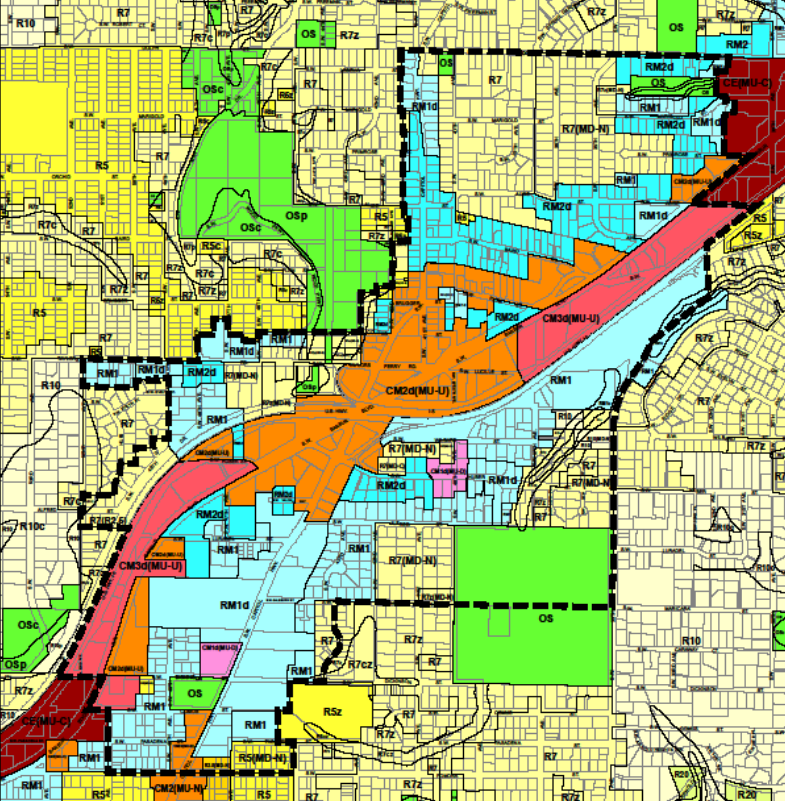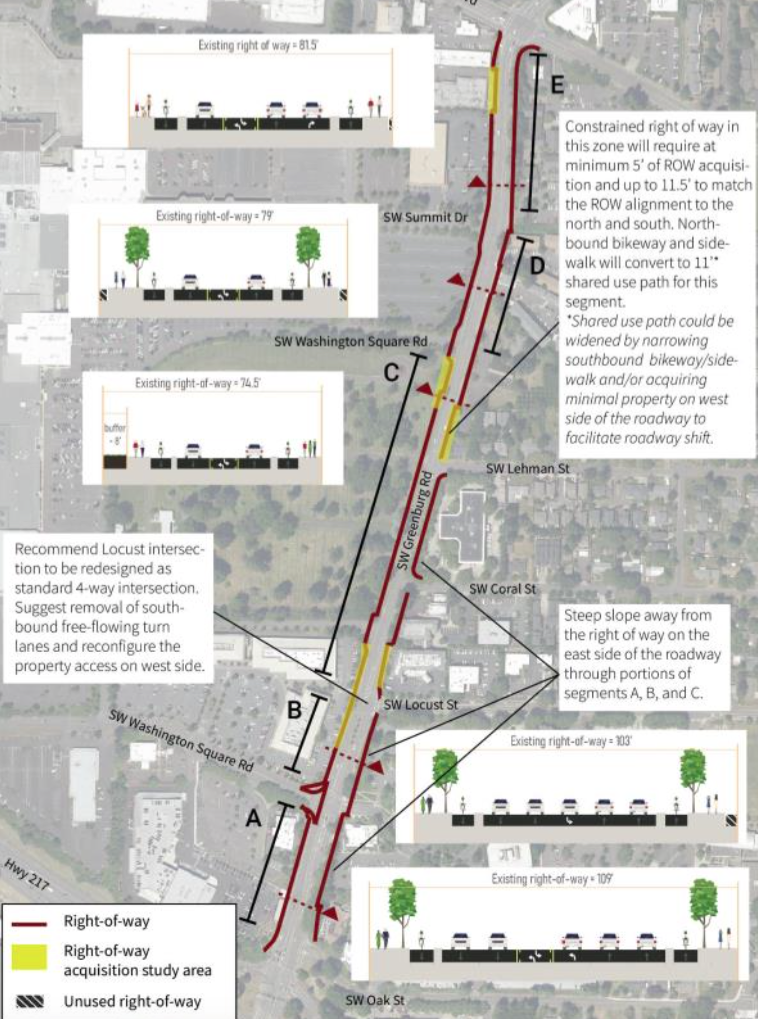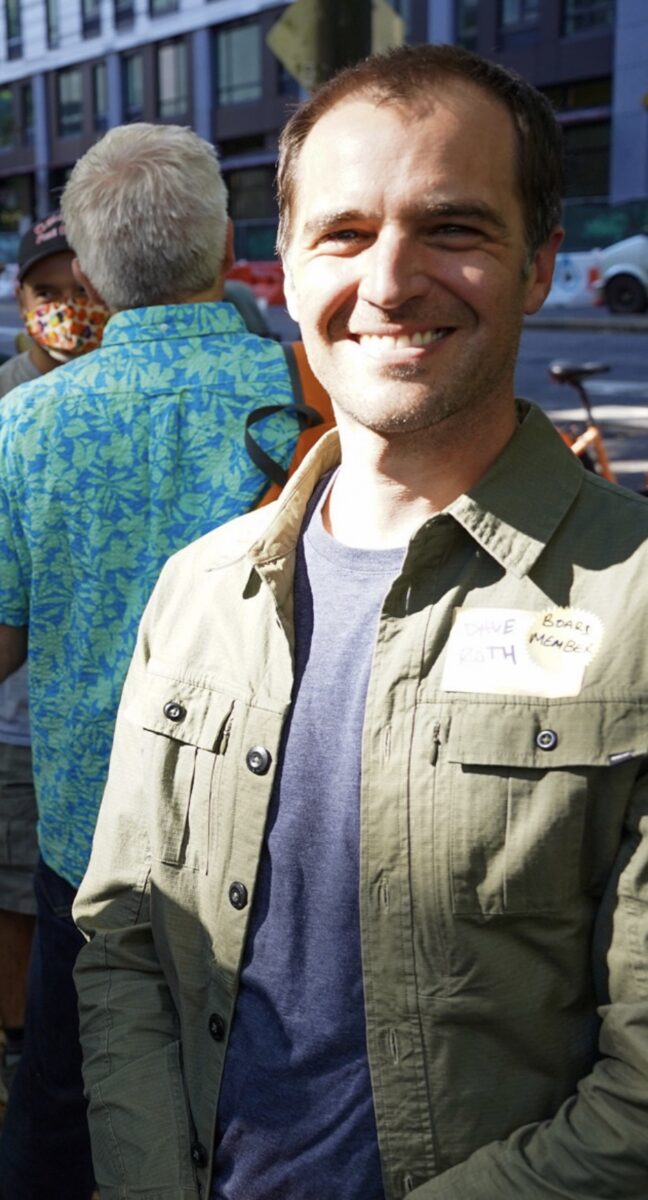
Two southwest area projects are currently taking their first steps from plan toward reality.
The Washington Square Regional Center (WSRC) is about three miles west of the West Portland Town Center (WPTC), and both are defined by the 2040 Metro regional growth plan.
So while it’s tempting to compare them — they’re near each other and rolling out at the same time — that would be unfair. In planning parlance, a “regional center” is a much more ambitious undertaking than a “town center.”
Despite that difference of scale, however, the two efforts share a similar challenge, how to transform a car-centric area into a denser, people-centered community without pricing out current residents.
It is also informative to contrast how the larger WSRC project is able to tackle transportation problems straight on, while the town center project in West Portland lacks the heft to address its major traffic circulation problems.
Tigard – Washington Square Regional Center

Sitting in the middle of Tigard’s regional center is the Washington Square Mall itself. The mall is owned by the real estate investment company Macerich. Macerich has ambitious plans to redevelop their holding, moving away from big box stores and toward a more urban experience.
The possibility of large private investment into the area is a nice tail-wind for the public redevelopment efforts.
Tigard has recently requested $21.5 million in Major Street Transportation Improvement Project (MSTIP) funds from Washington County to transform the arterial on the mall’s eastern border into a “complete street.” MSTIP is funded by a county-wide property tax unique among the Metro counties, and has delivered $900 million toward 150 projects over the past three and a half decades.
I recently met with David Roth, a Senior Transportation Planner with the City of Tigard, to talk about the Greenburg Road project, and the regional center in general.
Roth pointed out that Greenburg Road divides the mall from the Metzger neighborhood, home to many residents who face a high risk of displacement as the area redevelops. The project would provide safe crossings from Metzger to the retail center, as well as remedy the corridor’s many active transportation deficiencies.
He explained that the team had prioritized five transportation projects, with Greenburg having the highest priority. “Greenburg is a good project to start with. It will be a demonstration project that makes future projects easier to pursue.”
Other high-priority transportation projects included bicycle and pedestrian improvements at the Hwy 217 interchange, and a possible over-crossing at 95th Ave to allow safe bicycle and pedestrian connections to the Fanno Creek trail to the west.
“We are trying to establish a precedent for good planning and best practice for design to show what can be done,” remarked Roth. The Washington County Board of Commissioners will decide on project funding in the winter of 2023.
West Portland Town Center
Last week in Portland, the Bureau of Planning and Sustainability (BPS) presented its draft West Portland Town Center plan to City Council, with a vote to adopt coming up on October 27th.
About six minutes into the BPS staff presentation, Commissioner Jo Ann Hardesty asked the first of what ended up being a series of questions about land speculation and anti-displacement strategies. For several minutes the hearing became a conversational back-and-forth about zoning, densification strategies and infrastructure needs.
The exchange brought into relief the challenges of trying to increase density in an area with inadequate infrastructure—and without a commitment from the city to provide the needed capital to remedy the situation. (In Southwest Portland “inadequate infrastructure” usually means lack of stormwater facilities.)
Absent a way to fund stormwater infrastructure, the plan follows a two-phased zoning change strategy based on infrastructure readiness. The first phase immediately upzones areas ready to support densification. Identified as second phase is land which BPS would like to upzone, but cannot because of stormwater treatment deficiencies. Hardesty’s concern, and the Mayor joined her with questions, was that the interval between phases allowed for land speculation.
With the focus on zoning and speculation, the future town center’s transportation problems were not discussed.
Wrap up
The West Portland Town Center sits on a traffic quagmire formed by the crossing of SW Barbur Blvd and I-5, both under ODOT jurisdictional control. Many people have remarked that decommissioning ramps to and from I-5 would be a key step toward improving area safety and circulation.
But a town center plan doesn’t have the heft to activate traffic change of that magnitude. Zoning changes and Comprehensive Plan updates don’t cost much, so the focus becomes modelling a “new approach to equitable growth.” That, and phased plans to be activated if funds become available in the future.
The SW Corridor light rail project, had it passed, would have helped with some of the area’s stormwater problems. Without it, the WPTC no longer benefits from the synergy a better-funded and bigger project could provide to it.




